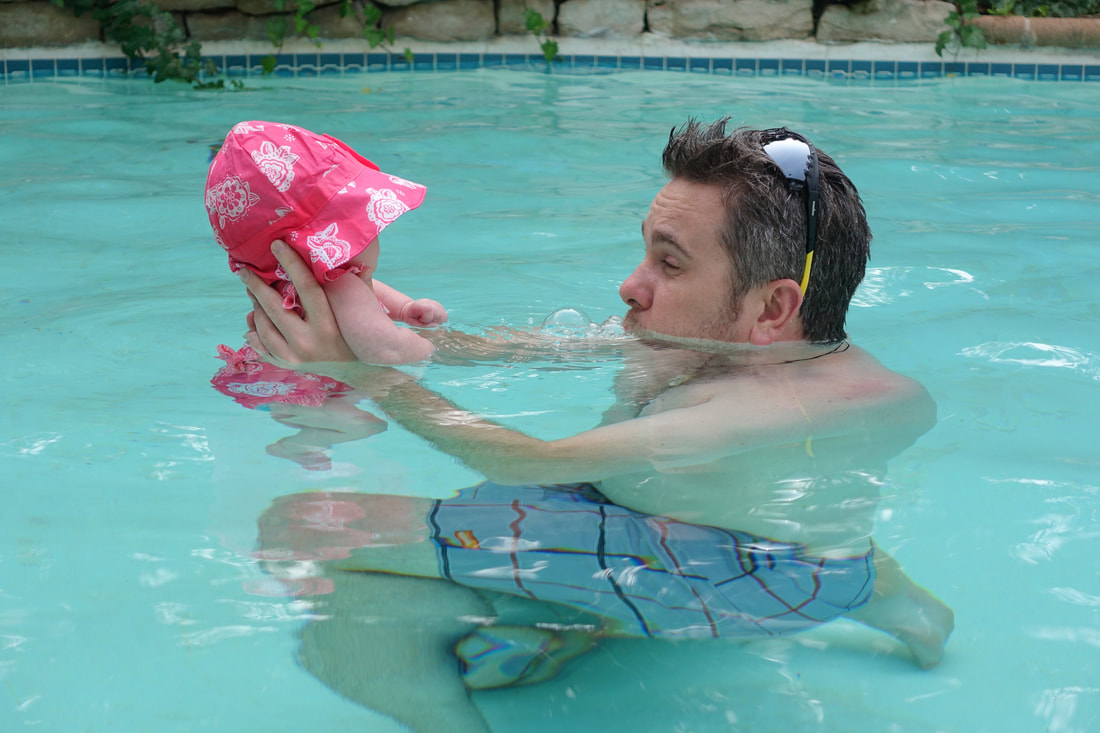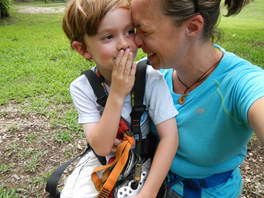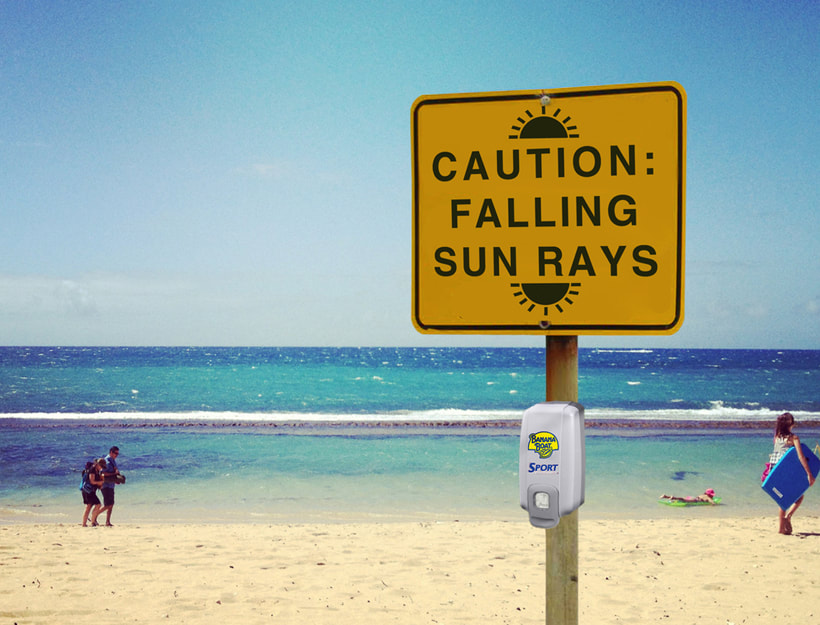|
School is back in session and in addition to hitting the books, many students are back in the gym training for fall sports. Each year, more than 60 million school aged children participate in organized sports! Being a member of a sports team can bring a number of great experiences and life lessons for students, along with fun and great memories. So whether your daughter or son plays volleyball, basketball, football, tennis, baseball, runs track or is a tumbling gymnast, it is important for parents and students to be aware of overuse injuries.
What is an overuse injury? An overuse injury is damage to a bone, muscle, tendon or ligament caused by repetitive stress and without given the time to properly heal. Children and teens are at increased risk for overuse injuries for a multitude of reasons. Their growing bones are more susceptible to injury and they might not always be aware the symptoms that they are experiencing could be an overuse injury. Some common examples include tennis elbow, runner’s knee, pitcher’s elbow and shin splints. What symptoms should student athletes and their parents be looking for? Well, there are four stages of overuse injuries and how they typically present and progress. Stage 1: Pain in an affected area after activity Stage 2: Pain in an affected area with activity, but not limiting performance Stage 3: Pain during activity and limiting performance Stage 4: Chronic persistent pain even at rest What can student athletes and parents do to help prevent overuse injuries . . . 1. Every student athlete should have a PPE or preparticipation physical evaluation. Ideally this evaluation or sports physical should be performed by your child’s primary care physician, who has knowledge of their prior health history and can follow them for any chronic conditions as well as help manage any acute injuries. 2. All student athletes should maintain year-round fitness, during the season and the off season as well. 3. Proper warm ups and cool downs with all practices and games. 4. Limit a particular sport to 5 days per week. This also helps to prevent burnout. 5. It is recommended that athletes participate in only one sport and on only one team each season. 6. Encourage participation in a variety of sports. This gives your child an opportunity to learn new skills, make new friends and even maybe find a new passion. If your student athlete has pain or symptoms of concern, contact their primary care physician for an evaluation. We wish all of our student athletes a fun, safe and healthy season! Dr. Jennifer Teegarden
0 Comments
 Living in Kansas City has taught me that nothing feels better than a cool pool on a HOT, midwest, summer day. The pool is a natural gathering spot for friends and family, and kids love it! That being said, we are constantly reminding and updating our own "pool rules" to keep safety at the forefront. After all, rules for a toddler are much different than for a 12-year-old. The CDC estimates that there are 10 unintentional drownings each day and that 1 out of 5 occur in children ages 14 and younger. The biggest reasons for these deaths are lack of swimming ability, lack of water enclosure (gates, etc) and lack of supervision. A fence with locking gait is always a good idea if you've got an in-ground pool, but don't forget the above-ground pools. Removing the ladder and storing it in a place that kids can't access is critical in avoiding pool-related accidents. As far as "lack of supervision" goes, this doesn't just mean not having an adult in proximity to the pool. It's easy to get side-tracked when outside enjoying a summer day with a group of friends and drownings happen in group settings when everyone assumes everyone else is watching out for trouble. Be sure there is always at least one person on "active" life-guarding duty when hanging out poolside. I've seen kids get into a sticky situation in a matter of seconds even with a grown-up close by. The splashing and shrieking of the other kids can sometimes distract from a panicky child who can't call out for help so keeping a close eye on the whole pool is very important. And lastly, there are tons of great places to get swimming lessons around town including: the YMCA, the Jewish Community Center, Infant Aquatics, UMKC, as well as lessons at local parks and recreation facilities. Basic life support classes are offered at a variety of places, including Kansas City First Aid. See the tips from www.poolsafetly.gov below for some ideas on how you can help safeguard your family and friends.
Look after yourselves and have a safe and happy Memorial Day weekend!
The sun is finally out and if you're anything like me, you don't think about sunscreen until right after you've been out in it too long - ouch! This year, I'm ready and thought I'd share some tips on how to keep you and your family - of all ages - safe in the sun. Tips for Avoiding Sunburn 1. Dress for success. In this case that means wearing sun protective clothing, hats, and other physical barriers to protect the skin from the sun. And don't forget sunglasses! 2. Try to avoid the sun's most intense rays by staying out of the sun during the middle of the day when the sun's rays are most intense. This may seem obvious, but it takes advance planning. 3. Don't be lulled into complacency by overcast days, since most of the sun's harmful rays will get through the clouds. 4. Keep babies younger than 6 months out of direct sunlight altogether. Shade can be found under a tree, umbrella, or the stroller. 5. Be especially careful if you are around water, sand, snow, or any surface that will reflect and therefore intensify the sun's rays. 6. Remember, the sun’s rays are more intense the higher you get in elevation. Use extra precaution when in the mountains. Tips for Selecting Sunscreen 1. When purchasing sunscreen, select a brand with an SPF of at least 30, preferably greater. 2. Choose a sunscreen that says “broad-spectrum” on the label – this means it will provide protection against both UVA and UVB rays. 3. In general, infants' skin is much thinner and more sensitive to the sun than adults' skin, even in individuals with darker complexions. 4. The amount of sunscreen needed depends on how light the child’s complexion is. I prefer mineral based sunscreens to chemical based sunscreens where practical. 5. The AAP used to recommend not putting sunscreen on infants under six months of age. This is no longer the case, because the danger from sunburns outweighs the risk of sensitivity to sunscreens. For babies younger than 6 months, use sunscreen on small areas of the body, such as the face and the backs of the hands. 6. Sunscreen is most effective if first applied 20-30 minutes before sun exposure. 7. Re-apply after swimming. 8. Even waterproof sunscreens should be re-applied every 80 minutes or so, after being in the water. Check out this great mineral based sunscreen that our family loves. Want more details on the best gear/products? Head on over to Lucie's List for all things summer. Now go outside and play! Kylie Vannaman MDDr. Vannaman is a proud family physician and co-founder of Health Suite 110 |
Archives
January 2021
Categories
All
|
|
Clinic Hours
Monday-Thursday 9am-5pm Friday 9am - 12pm Closed for lunch 12-1pm daily CONTACT US!
7199 W 98th Terrace, Suite 110 Overland Park, KS 66212 Bldg #3 in Windmill Village phone:: 913-948-7652 fax: 913-273-2474 [email protected] |
Physician office hours:
Dr. Groves: Mon, Wed, Thurs 9am-5pm, Tues & Fri 9am-12pm Dr. Teegarden: Mon-Wed 9am-5pm. Thurs & Fri 9am-12pm Dr. Vannaman: Mon, Tues, Thurs 9am-5pm. Wed & Fri 9am-12pm Dr. Willnauer: Mon-Thurs 9am-5pm & Fri 9am-12pm |
2024 Holidays - Clinic CLOSED
New Year's Day - Jan 1 MLK Day - Jan 15 President's Day - Feb 19 Memorial Day - May 27 Annual staff retreat - June 13-14 Juneteenth - June 19 Independence Day - July 4, 5 Labor Day - Sept 2 Veteran's Day - Nov 11 Thanksgiving - Nov 28, 29 Christmas - Dec 24, 25, 26 |




 RSS Feed
RSS Feed